Hastened by the demands of the Paris Climate Agreement and continued reminders that the time for effective climate action is beginning to run out, the global transition to electrification is now inevitable.
The good news for those in the materials handling sector is that the recent technological advances, including the introduction of next-generation forklift batteries, place them in a good position to say goodbye to their old diesel or LPG-powered forklifts and be part of this important change.
That said, what exactly are the latest options, and how do they compare with each other?
“The next-frontier innovations in batteries are solid-state electrolytes and the new active cathode and anode materials, such as sodium-ion, silicon-ion and others. However, commercialisation of new technologies normally takes decades, so the most exciting innovations in power sources of today come with the tried and trusted lithium batteries,” says Maxim Khabur, marketing director of OneCharge, a supplier of over 650 models of industrial lithium-ion batteries for nearly every make and model of electric industrial trucks.
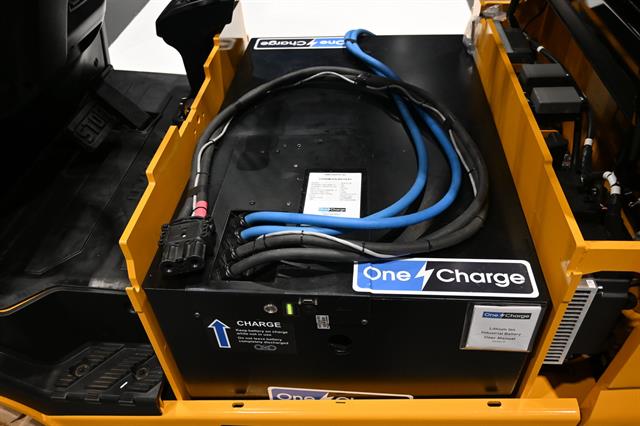 OneCharge is a supplier of over 650 models of industrial lithium-ion batteries OneCharge is a supplier of over 650 models of industrial lithium-ion batteries
According to Khabur, manufacturers, food and beverage makers, warehousing operations and others are turning to industrial lithium batteries to not only achieve sustainability goals, but also enhance efficiency, overcome labour shortages, and more.
“The benefits of lithium-ion batteries include longer operating time with minimal downtime, improved operations, remote diagnostics and integration into fleet management systems. Lithium batteries are fundamental for AGV and AMR use, which helps to overcome labour shortages and support automation in manufacturing and logistics,” he says.
"As a power source, they (lithium batteries) keep up with the technology available on the forklifts, providing better, cleaner, more stable power, that is safer for the operation, the forklift and the driver."
Mark D'Amato, Sales Director, RoyPow USA
No dangerous substances
According to Mark D'Amato, sales director of RoyPow USA, another attraction of lithium batteries is the fact that – unlike traditional lead acid alternatives – they contain no dangerous substances (acid, hydrogen during gassing, etc.). They eliminate battery labour costs and end-of-shift charges, and perform effectively in cool room and freezer applications.
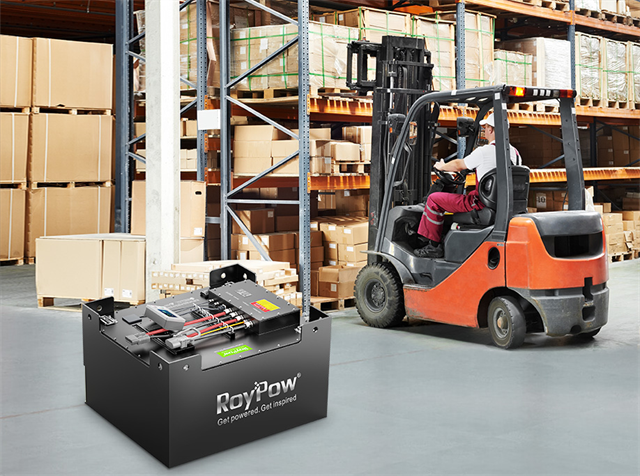 Lithium batteries from RoyPow contain no dangerous substances Lithium batteries from RoyPow contain no dangerous substances
“As a power source, they keep up with the technology available on the forklifts, providing better, cleaner, more stable power, that is safer for the operation, the forklift and the driver. Overall, they can be relied upon to reduce (their) carbon footprint and ultimately lower the total cost of ownership for many companies,” says D'Amato.
On top of that, he adds, lithium batteries offer a longer service life than their lead acid counterparts. They generally charge in less than two hours and, thanks to their smaller size, they facilitate the installation of narrower aisles in warehouses, and in turn, free up space for extra pallet positions.
LiFePO4 batteries
It should be noted there is more than one type of lithium battery available.
“At the recent ProMat 2023 show, it seemed all the major manufacturers were focused on a lithium electric product offering,” says Robert Bond, vice president of sales and marketing at Tri-Lift Industries.
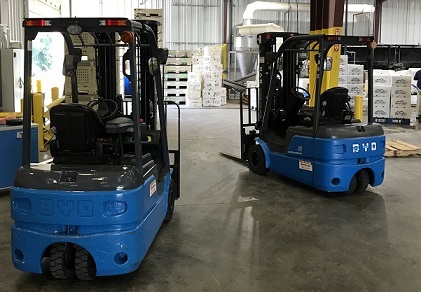 Lithium iron phosphate batteries deliver increased power, faster charging times and longer lifetimes Lithium iron phosphate batteries deliver increased power, faster charging times and longer lifetimes
“The largest battery focus is on lithium iron phosphate batteries as opposed to other lithium compounds like lithium cobalt oxide or lithium manganese oxide.”
Also referred to as LiFePO4 or LFP, lithium iron phosphate batteries are said to have several advantages compared to more traditional cobalt-based lithium-ion batteries. These include lower weight, increased power, faster charging times and longer lifetime.
According to Bond, the move to new technologies like LFP is market-driven.
“Many of the businesses I am working with are looking at timeframes of 24 months or less to achieve ROI on their electric conversion efforts. Savings in fuel, maintenance and employee safety, coupled with environmental benefits, means going electric is now easier than ever,” he says.
Tri-Lift Industries generally leads with two primary battery options when it comes to electric equipment. “We offer integrated lithium iron phosphate battery technology from BYD and drop-in lithium solutions from Clark forklifts. Between the two offerings, we have been converting companies across a range of industries away from diesel and liquid propane equipment to electric,” says Bond.
LiFePO4 batteries as drop-in replacements
So how easy is it to make the switch from lead acid to lithium?
“We have batteries that directly replace lead acid batteries as drop-in replacement, matching the weight and size precisely. With full CAN communication, our batteries can operate seamlessly with most trucks on the market,” says Robin Schneider, director of marketing at Green Cubes Technology.
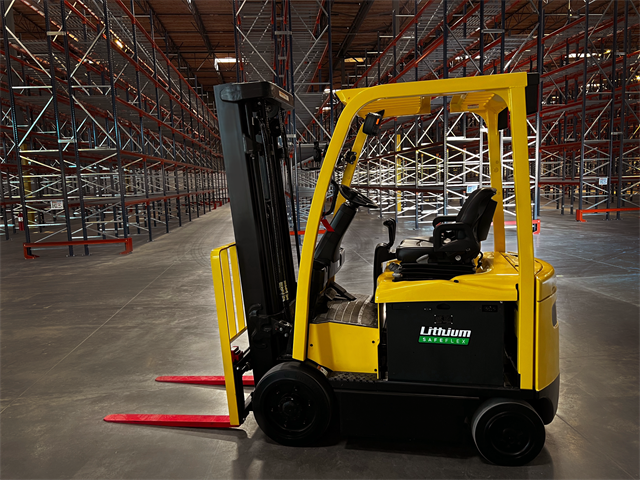 Green Cubes offers batteries that directly replace lead acid batteries as drop-in alternatives Green Cubes offers batteries that directly replace lead acid batteries as drop-in alternatives
“Green Cubes has the widest product line available of LiFePO4 batteries for Class I, II and III trucks. We also offer the smallest and lightest high-frequency charger on the market and integrated heaters for use in cold environments.”
Asked about the effectiveness of these products, Schneider points to the example of a well-known 3PL provider working with a large beverage distributor.
Previously, while working with lead acid batteries, the organisation’s forklifts operated with 680 useable amp hours and four to six hours recharge times. Then, after transferring to Safe Flex Batteries from Green Cubes, the corresponding figures were 600 useable amp hours, with a recharge time of just one to two hours.
On top of that, maintenance costs were reduced, safety improved and cost avoidance – in the form of elimination of the need for battery watering systems, acid retention walls/systems, and ventilation systems – accrued.
LiFePO4 technology with IoT-ready features
EIKTO, an end-to-end manufacturer of EKT LiFePO4 batteries that are specifically designed for motive traction applications, is another supplier worthy of note.
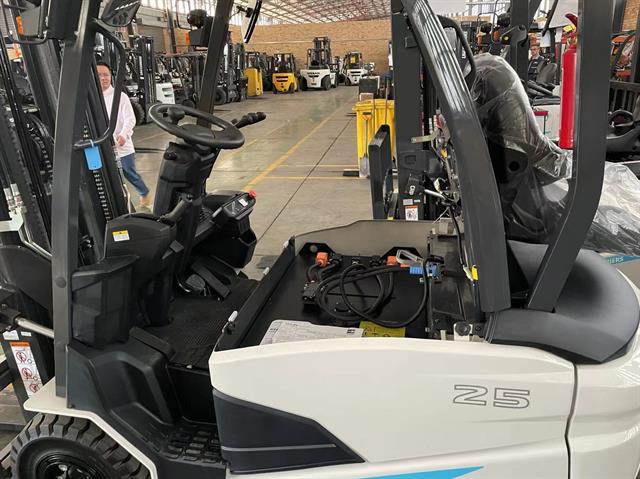 EKT offers three types of prismatic battery cells with capacities of 135 Ah, 150 Ah, and 175 Ah EKT offers three types of prismatic battery cells with capacities of 135 Ah, 150 Ah, and 175 Ah
“EKT is the battery name. Our high-quality EKT batteries offer exceptional performance and reliability, making them an ideal choice for a wide range of applications in the materials handling, logistics, and transportation industries. EKT LiFePO4 batteries are designed to provide long-lasting power, with an impressive lifespan of up to 10 years,” says Ron Ng, EIKTO’s country manager – Australia.
EKT offers three types of prismatic battery cells with capacities of 135 Ah, 150 Ah, and 175 Ah, which provides providing greater flexibility and agility to produce batteries that match customers' specific usage demands.
With a range of over 46-plus battery selections ranging from 25.6 V to 83.2 V and 135 Ah to 875 Ah capacity, EKT is able to support a variety of lithium battery sizes for the majority of forklift brands in the market.
“Overall, EKT battery products differentiate themselves from others on the market by offering a high level of reliability, durability, and flexibility that is specifically designed for demanding motive traction applications,” says Ng. “Our batteries provide all the benefits of LiFePO4 technology, as well as IoT-ready features for easy integration into customers' operations.”
Lead acid advances
Despite the much-touted benefits of lithium batteries, now is not the time to write off lead acid batteries altogether. Recent advances mean that these more traditional products are now able to deliver many of the benefits of their newer counterparts at a lower cost. This is a key point. The higher cost of the lithium options means that they are not suitable for all businesses.
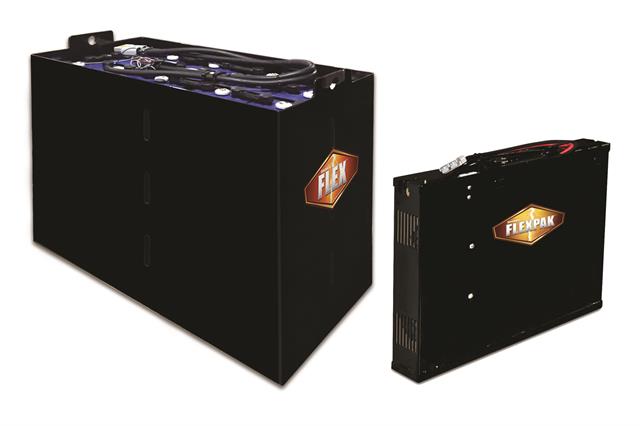 The HAWKER FLEX TPPL battery offers excellent flexibility and is virtually maintenance-free The HAWKER FLEX TPPL battery offers excellent flexibility and is virtually maintenance-free
Recognising this, Hawker offers not only lithium batteries but also Thin Plate Pure Lead (TPPL) products, which are a type of absorbed glass mat (AGM) battery.
“The Hawker FLEX TPPL battery is a chemistry we’ve been manufacturing for almost 30 years. The chemistry has been refined to include battery power for forklift applications which delivers the lowest cost benefits in light to medium duty applications,” says Dean Portney, vice president sales and marketing at Hawker.
“Hawker has been successfully satisfying advanced chemistry needs with this chemistry for approximately six years.”
According to Portney, the product shares many characteristics with lithium batteries. It is virtually maintenance-free, doesn’t require changing in most applications, and can be charged at high rates. Easy to use and requiring only low levels of maintenance, it is designed to increase forklift productivity at a lower economic cost.
 With a range that includes pure lead carbon batteries, Battery Supplies acknowledges that lithium is not the only option With a range that includes pure lead carbon batteries, Battery Supplies acknowledges that lithium is not the only option
Pure lead carbon batteries
Battery Supplies is another supplier that is ready to acknowledge that lithium is not the only option. Like Hawker, the company does offer lithium products in its range, including custom-made batteries in LiFePO4 technology (which are based on the specific customer requirements and the available dimensions in the equipment).
However, on top of that, Battery Supplies also offers several other options, including pure lead carbon batteries.
“Pure lead carbon batteries are maintenance-free. The lead used for the active material is pure lead. Just like CSM technology, this battery has a very good performance in more demanding applications,” says Micha Denys, business development manager at Battery Supplies.
According to Denys, the battery also copes with intermediate charging, has a fast recharge time, and can be used in partial state of charge conditions (which is also the case for LiFePO4 technology).
“The battery lifetime is 1,200 cycles and it is recommended not to discharge deeper than 60%. This battery is based on 12 V front terminal blocks, so we are somewhat restricted in space,” he adds.
Battery charging options
 Delta's MOOVair Wireless Charging System delivers important safety benefits Delta's MOOVair Wireless Charging System delivers important safety benefits
According to Alistair Coltart, director of Delta Industrial Battery Charging Solutions, the introduction of lithium-ion batteries has also improved the efficiency of charging.
Unlike lead acid batteries, which “are typically taken out of the vehicle and charged in a separate battery charging room”, lithium-ion batteries can be charged very quickly. This makes opportunity charging – the practice of charging batteries in short bursts, and at convenient times – possible.
“These benefits could be multiplied as wireless charging technologies become mature, so the end user does not even have to manually plug the charger in which saves manpower and can run 24/7 compared to traditional wired charging,” says Coltart.
Products like Delta’s MOOVair Wireless Charging System also deliver important safety benefits. They solve the problem of having to safely remove bulky batteries (weighing 200 kg – 2,000 kg) without leaking sulphuric acid; and they eliminate the ‘gassing phase’, which requires effective ventilation in charging rooms and can potentially cause fire.
“The combination of lithium-ion batteries and wireless charging reduces maintenance time and achieves convenient and autonomous logistics for end-users,” says Coltart.
“When adopting wireless charging into a fleet of forklifts, the ‘old school’ charging methods are thrown out as there is no longer the need to disconnect the battery from the vehicle, remove the battery and take it to a battery room for charging.
“If the vehicles are manually driven, then the only important criteria for charging wirelessly is to make sure the charging pads are aligned correctly. This means a little careful driving, but saves a lot of the dangerous manual work involved in ‘old school’ charging.”
| 


 Chinese
Chinese USA
USA English
English Russia
Russia






